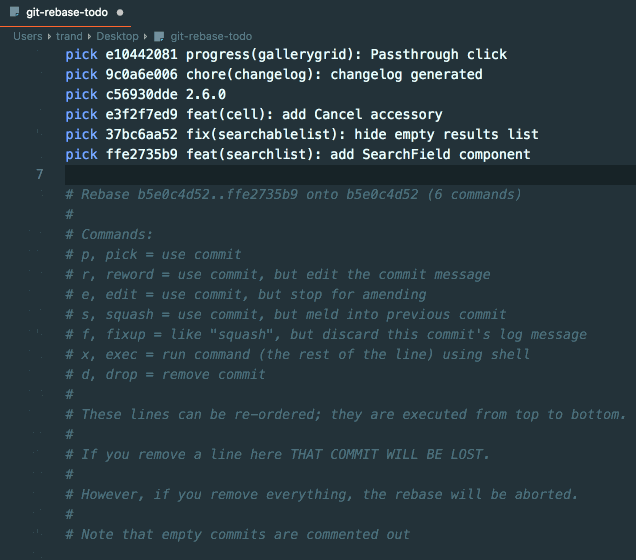

To run git rebase interactively, add the -i option.
#Git rebase reword update
This will not only update the commit message, but will effectively change the commit itself and write a new one.Īgain, please be careful and don’t amend your last commit if you’ve already pushed it to the remote repository!įor any other commit (anything older than the most recent one), you have to perform an interactive rebase. Here you can make your changes, save them, and quit the editor. This command can modify both the content and the message of the most recent commit, and it opens your default text editor.

Keep in mind that there’s a shortcut for this scenario which doesn’t involve interactive rebase: $ git commit -amend In many cases, you’ll want to change the most recent commit. First, we change an old commit’s message.In the examples of this article, we will do the following things: Here’s the little example repository we’re going to use throughout this article: Note that I’m using the Tower Git desktop GUI in some of my screenshots for easier visualization.Īfter you’ve examined the list, it’s time to start the work. You can use the git log command to examine a project’s history and show the commit log. In your first step, you are always going to look at the current state of the commit history. For example, you can manipulate the selected commits by reordering, deleting, combining them, and so on. Here, you have the chance to edit your commit history. How far back in time do you want to go? Once you have the answer, you can start your interactive rebase session. The first step is to determine the range of commits you want to manipulate. This is always the same, no matter what exactly we’re doing-deleting a commit, changing a commit message, combining commits… the steps are identical. Interactive rebase workflowīefore we take interactive rebase for a test drive, let’s look at the general workflow. Your colleagues might have based their work on these commits-and when you use interactive rebase to rewrite commit history, you are changing these base commits.Īll of this means that an interactive rebase is meant to help you clean up and optimize your own local commit history before you merge (and possibly push) it back into a shared team branch. This means that you shouldn’t use an interactive rebase on stuff that you’ve already pushed to a shared remote repository.

So, by changing that hash, you technically create completely new commits. Also, a quick reminder: commit IDs are there to identify commits-they are SHA-1 checksums. Keep in mind that an interactive rebase rewrites your commit history: all of the involved commits get a new hash ID. It’s meant for optimizing and cleaning up. In short, interactive rebase allows you to manipulate your commit history. Part 8: Using the Reflog to Restore Lost Commits.Part 6: Interactive Rebase ( You are here!).Part 3: Better Collaboration With Pull Requests.Part 1: Creating the Perfect Commit in Git.


 0 kommentar(er)
0 kommentar(er)
